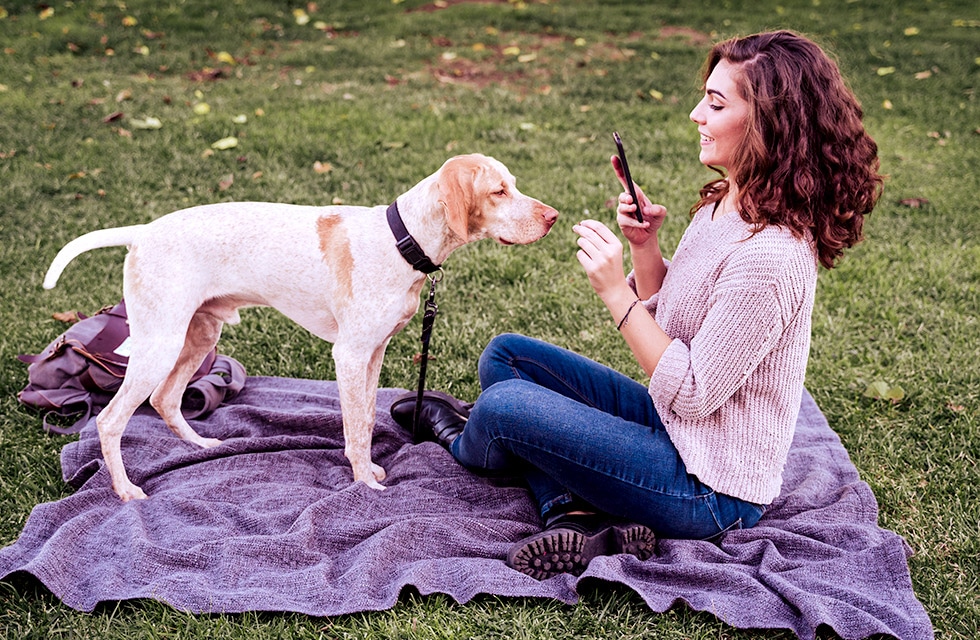
Pets are like family and make for wonderful photography subjects, but it can be hard to capture their unique personality through the lens of the camera.
Read on for pro tips on how these simple photo editing techniques will take your animal photos to the next level.
Focus on their character
The best pet photos show off the character of the animal, so don’t get bogged down by camera techniques. Instead, choose an automatic camera setting and a continuous burst in order to capture those spontaneous moments and priceless expressions.

Sometimes it helps to create candid moments by spraying water near them, throwing food up in the air, making funny noises or doing anything else that generates a funny or cute reaction. Have fun and let your pet play up to the camera.
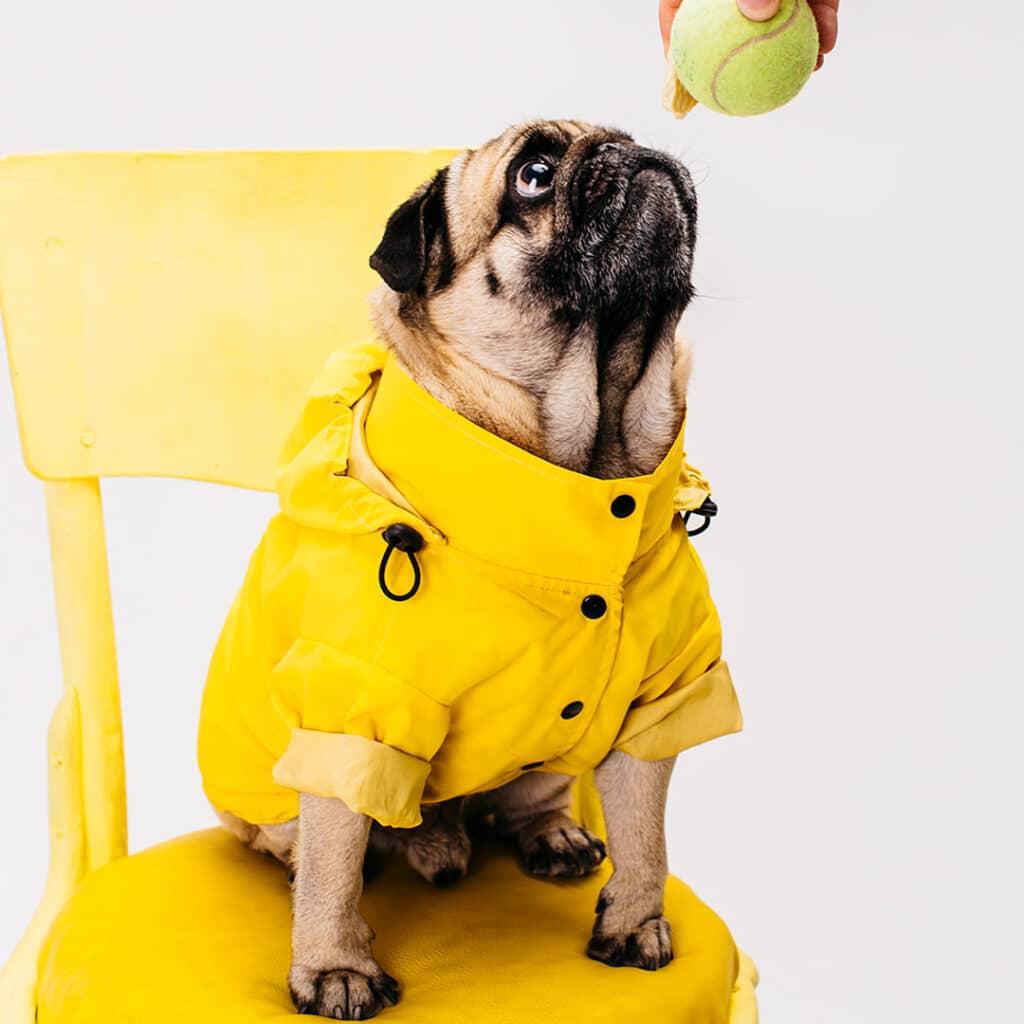
Props and surroundings will help you tell a story and bring out the character of your subject.
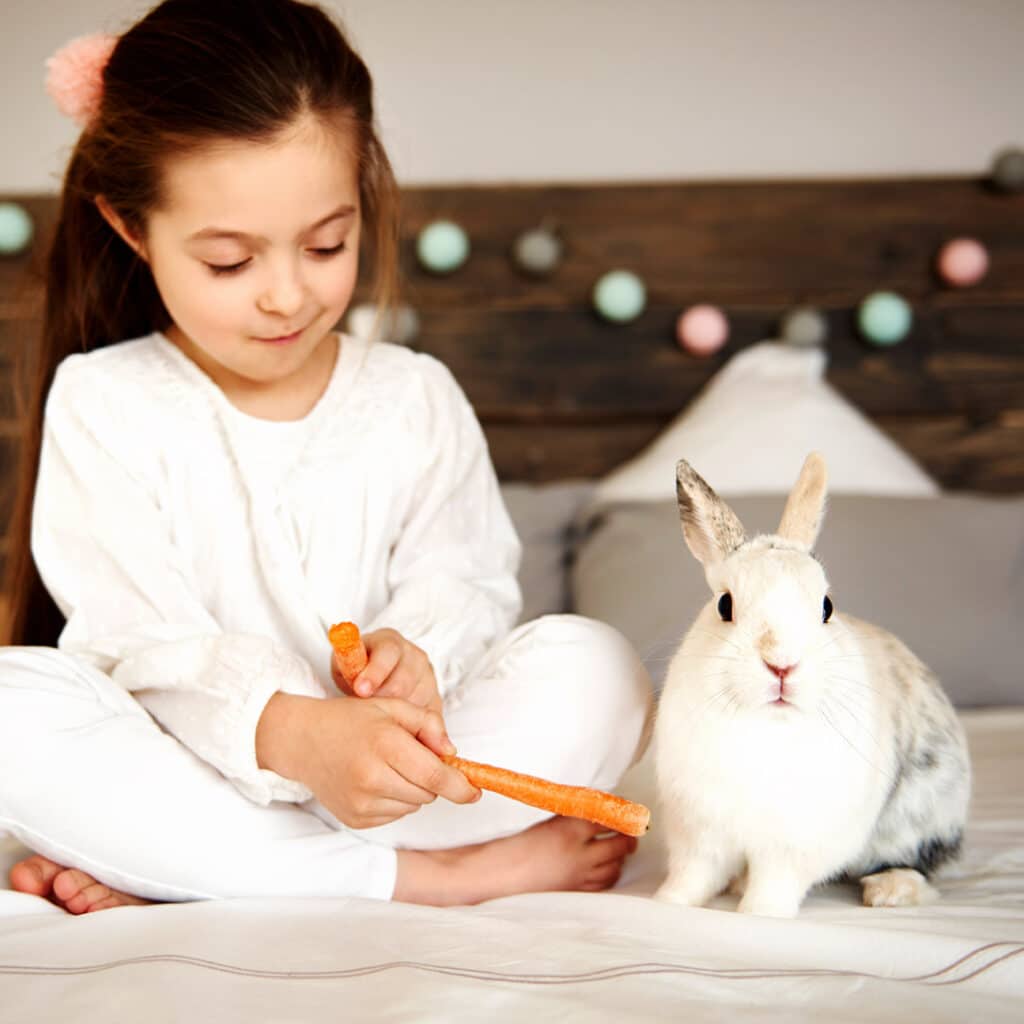
Pets love their treats
Your typical pet isn’t interested in having their photo taken, but they are much more likely to be interested in treats and snacks! So keep a few in your pocket for times when they’re restless and don’t feel like sitting still. However, be ready with your camera because the moment you pull out the treat, they will probably ruin your carefully prepared composition and trot straight up to you. As such, it can be useful to have a second pair of hands on deck to keep your pet in the desired pose.
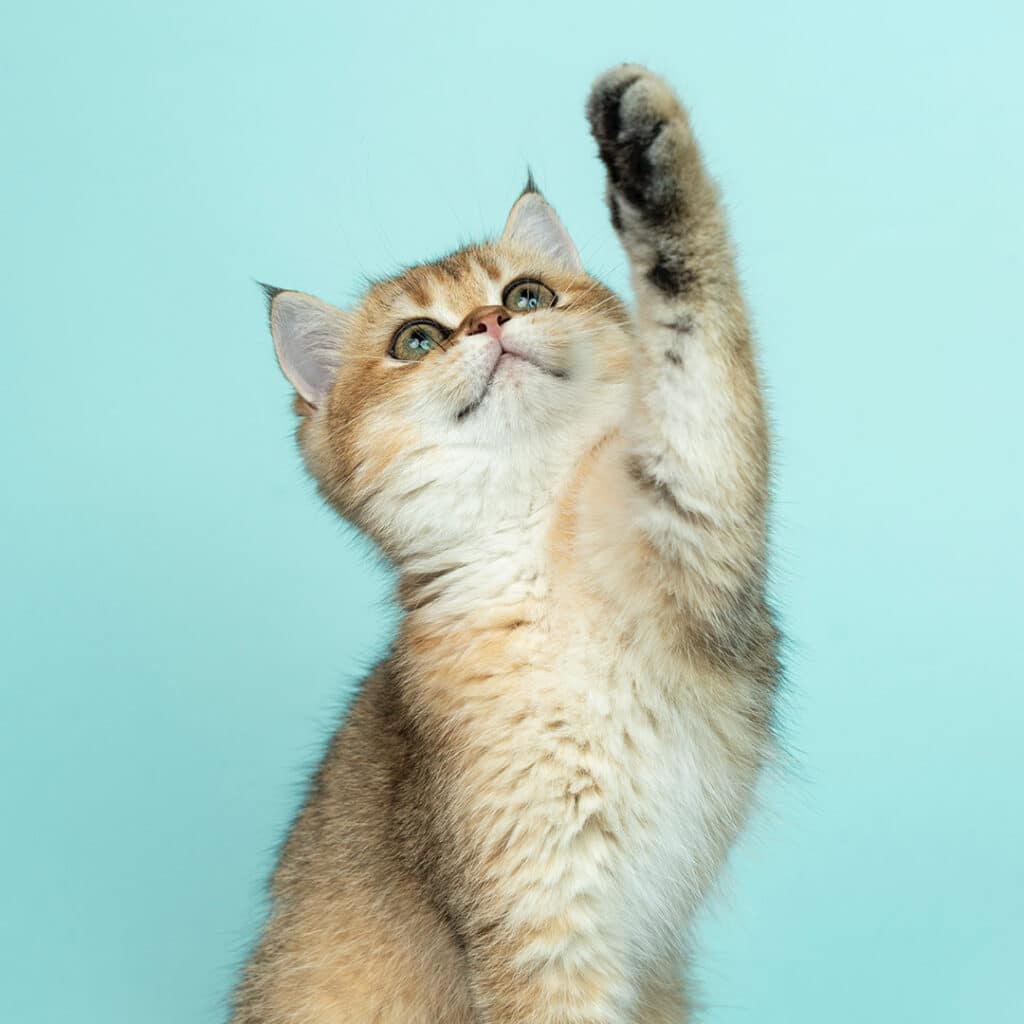
Seek out the best light
Lighting is key in pet portrait photos. Soft, natural light is ideal, so avoid direct sunlight and wait for cloud cover. If shooting indoors, position the pet near a window. Sometimes strong directional light can elevate the shot. Feathers and fur look wonderful when lit from behind by a low sun. Try backlighting feathers and fur with the evening sun to separate your subject from the background. The edges of their fur will glow as the light filters through it.
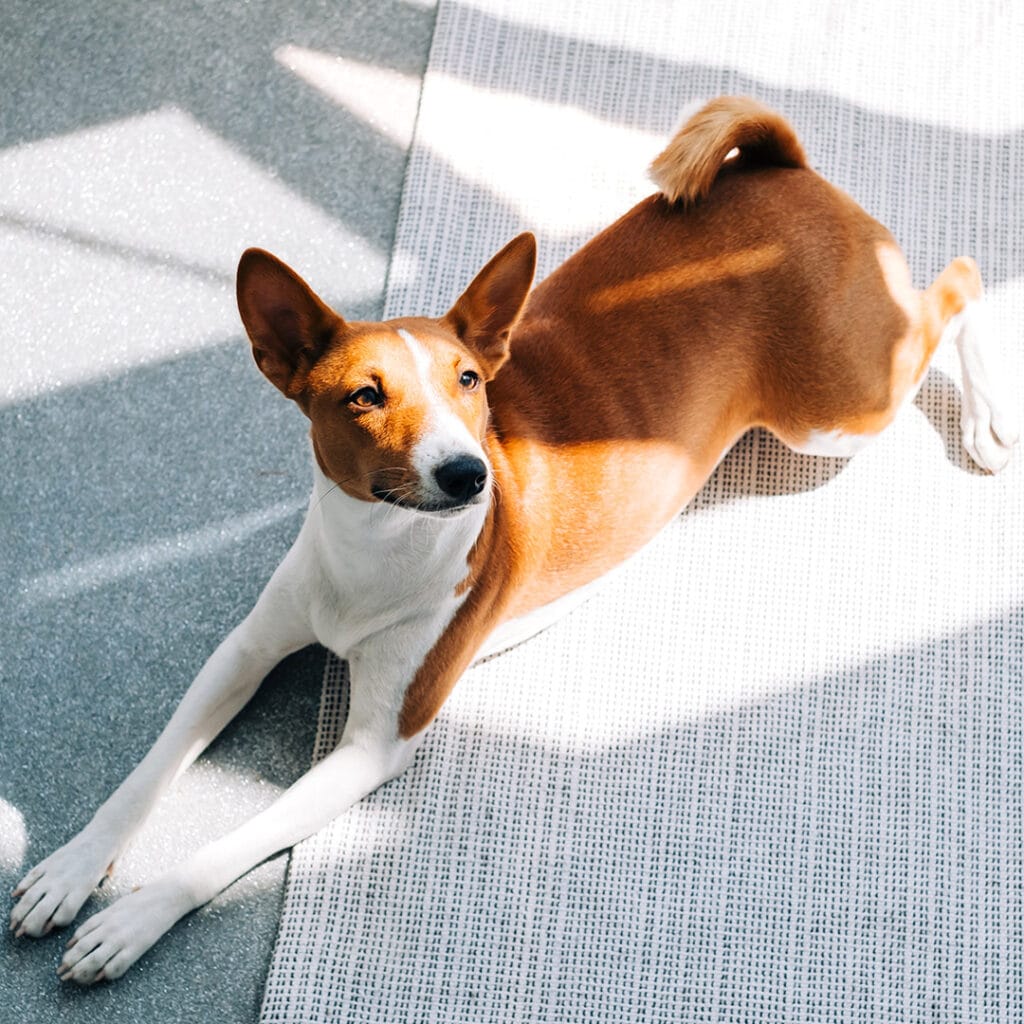
Find a fun angle
If there’s one thing the internet excels in, it’s photos of pets – especially cats (#catsofinstagram). One way to make your animal friends stand out from the crowd is to find a dynamic angle for your shot. It needn’t be as extreme as putting your camera down a literal rabbit hole, but thinking about your camera angle can go a long way. Perhaps your pet has a favourite blanket you could capture them on, or a tree they like to climb. Including details like this can elevate your photos beyond mere pet portraits, showcase the individual character of the animal and give you something truly worth printing out and keeping on display.
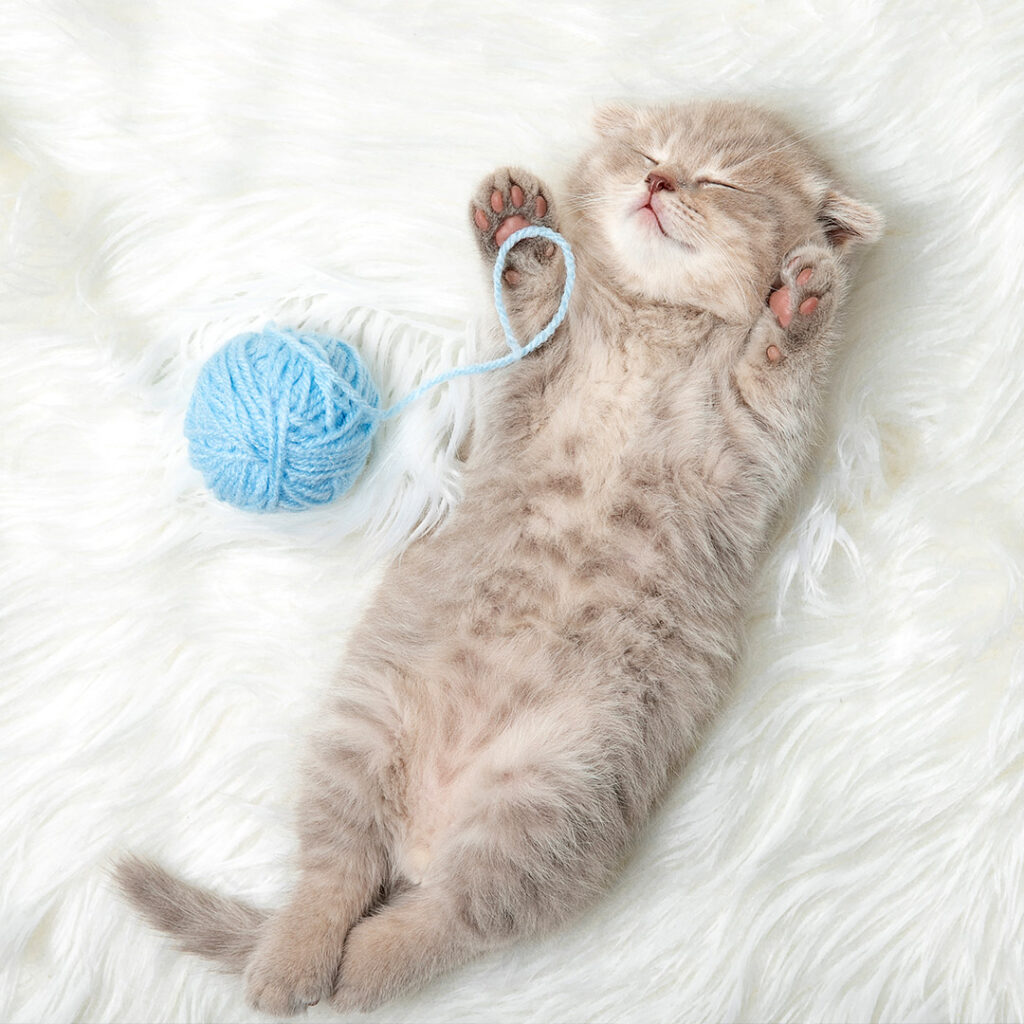
Get them moving
Capturing pets in action can be a challenge, but it’s a great way to show the animal at their athletic best. You’ll need a fast shutter speed of at least 1/500 second, or upwards of 1/1000 second for very fast-moving subjects like jumping animals or birds in flight. Use your camera’s shutter priority mode or sports setting to set a fast shutter speed. Select continuous auto-focus to track the movement and set a high drive rate so you can shoot a burst of rapid fire frames when the action happens.
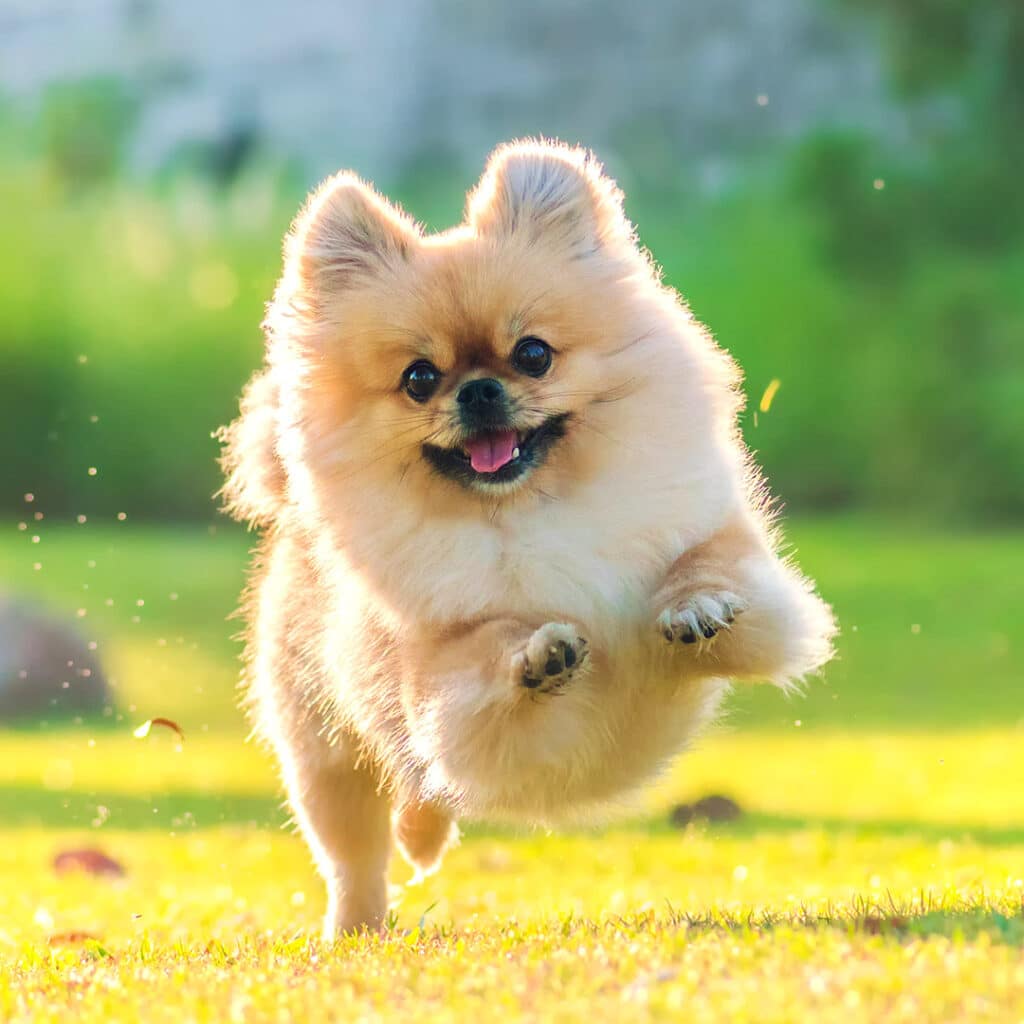
Shoot at eye level
Whether shooting pictures of animals or people, one way to create a connection with the viewer is to place the camera at eye level. This becomes more important with pets as it often means getting down low to the ground. As well as the connection we can create, it’s also a great way to show the surroundings from the perspective of the animal. If you like you can go even lower than eye level so your camera is looking up at the pet. This can make the animal appear statue-like and powerful, plus it’s a viewpoint we don’t often see of our animals in day-to-day life.
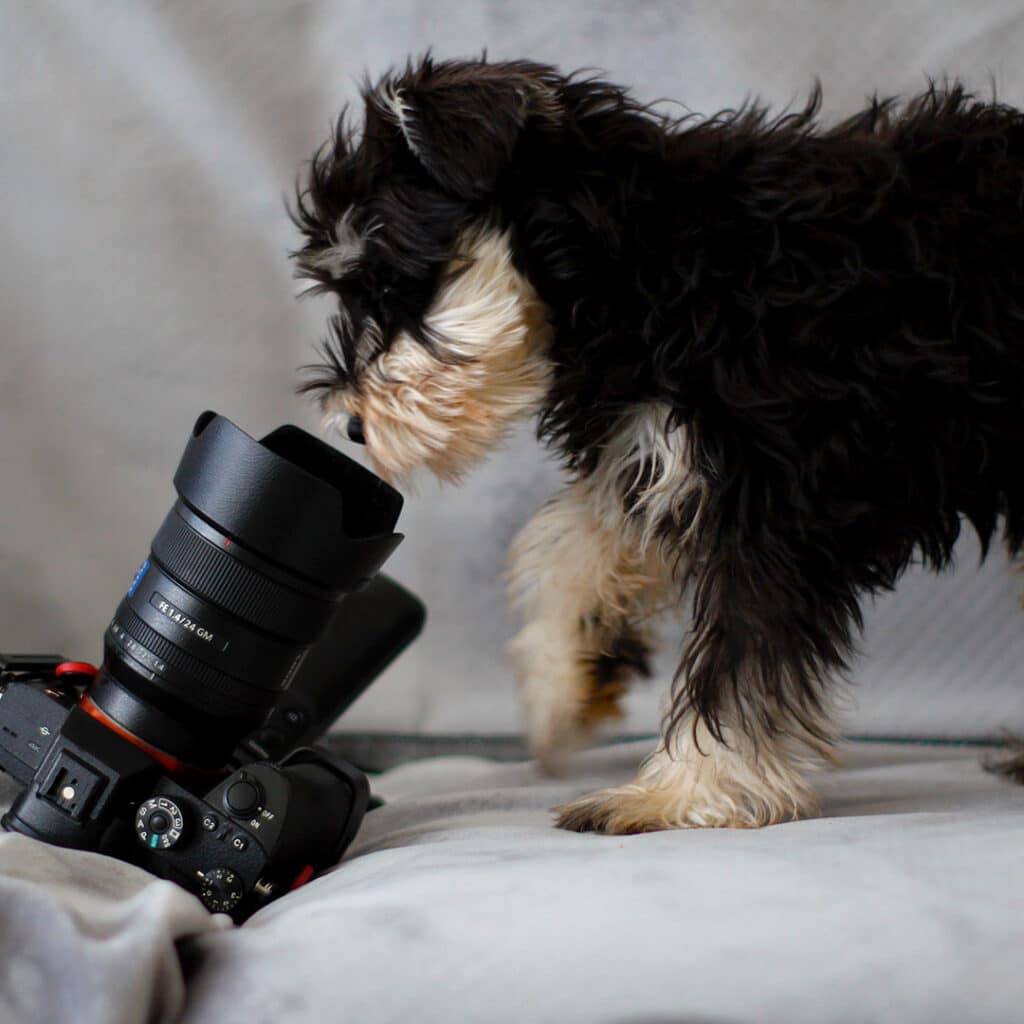
Shoot a tight close-up
For a bold pet portrait try framing tightly on the face and ensure that the eyes are perfectly sharp. This can be a bit of a challenge with animals, as the autofocus may land on the end of their nose rather than their eyes (throwing them out-of-focus in close-ups). Use single point autofocus and position the point over the closest eye. Many modern mirrorless cameras have eye-detection autofocus, which can give you a great advantage when capturing animal close-ups.
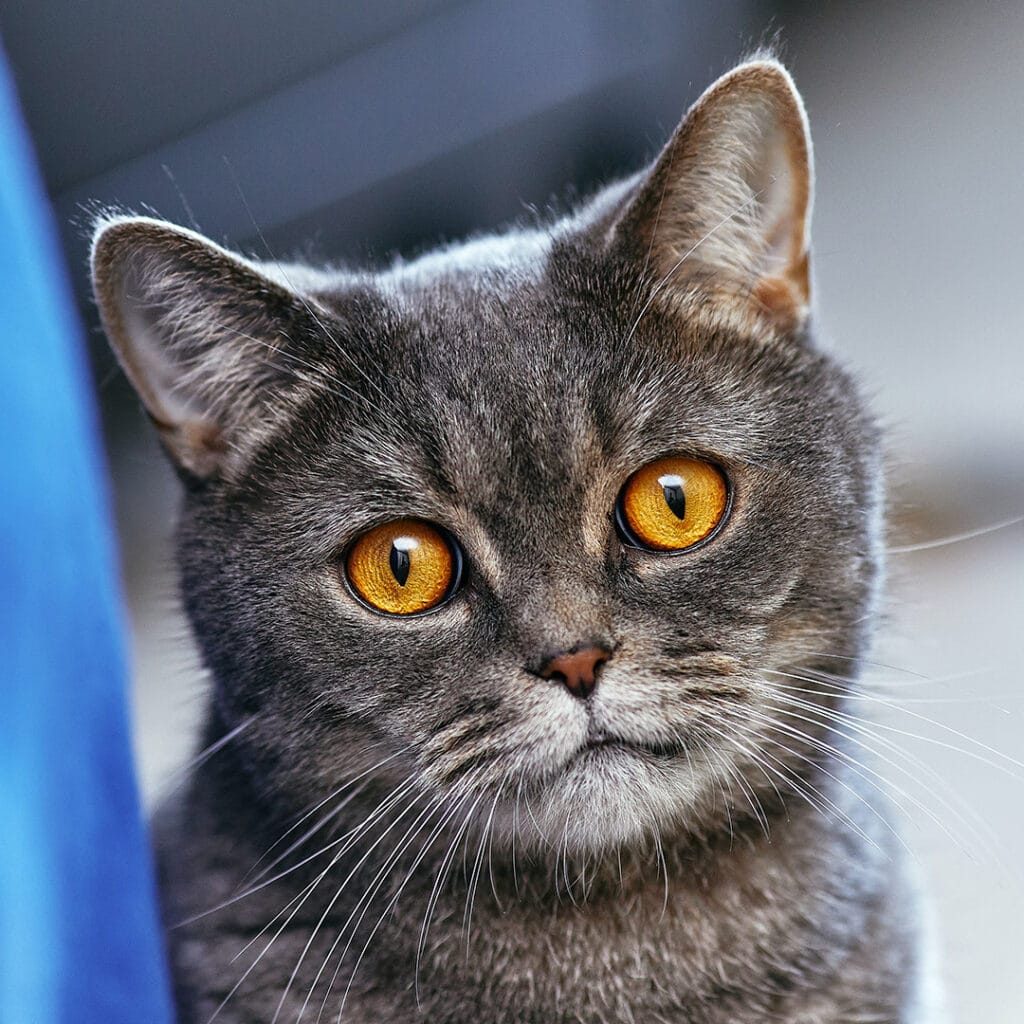
Try black and white
A bold black and white treatment can be a great choice for pet photos. Black and white has a magical ability to draw attention to expression, so it’s fantastic for showcasing faces. The absence of colour also emphasises other things like textures and fur, especially if the animal has attractive patterning.
A strong dark background can help amplify the fine details of your pet portrait and will give it a classic look, and you can also also edit your photos on Snapfish.”
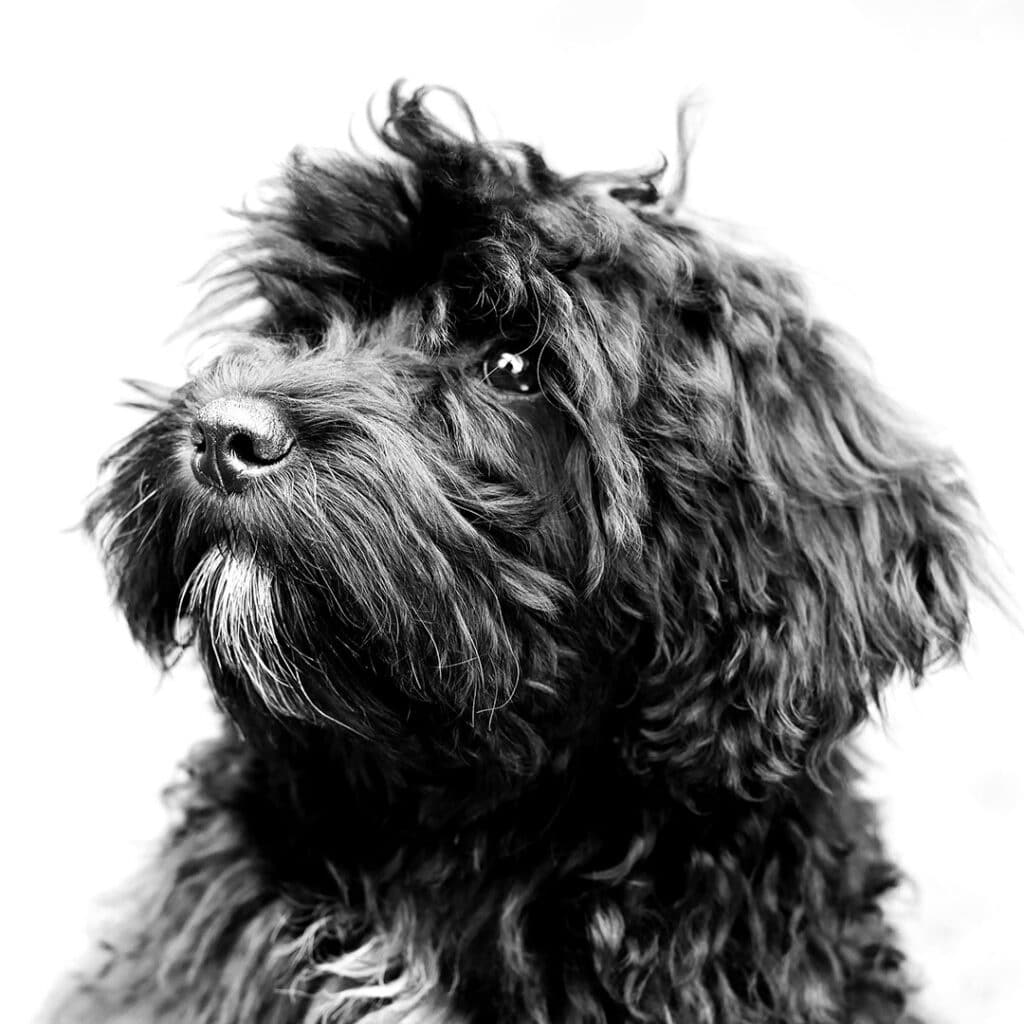
Use Portrait Mode
If you have an iPhone, use Portrait Mode to blur out distracting backgrounds.
Open the Camera app and swipe to Portrait Mode.
Follow the tips on your screen. When Portrait Mode is ready, the name of the lighting effect, such as Natural Light, turns yellow.
Tap the Shutter button .
The Camera app lets you know when you’re too close, too far away or if the area is too dark. You can also use True Tone flash, set a timer and apply filters. After you take a photo, you can use the built-in editing features to do things like crop and auto-enhance.
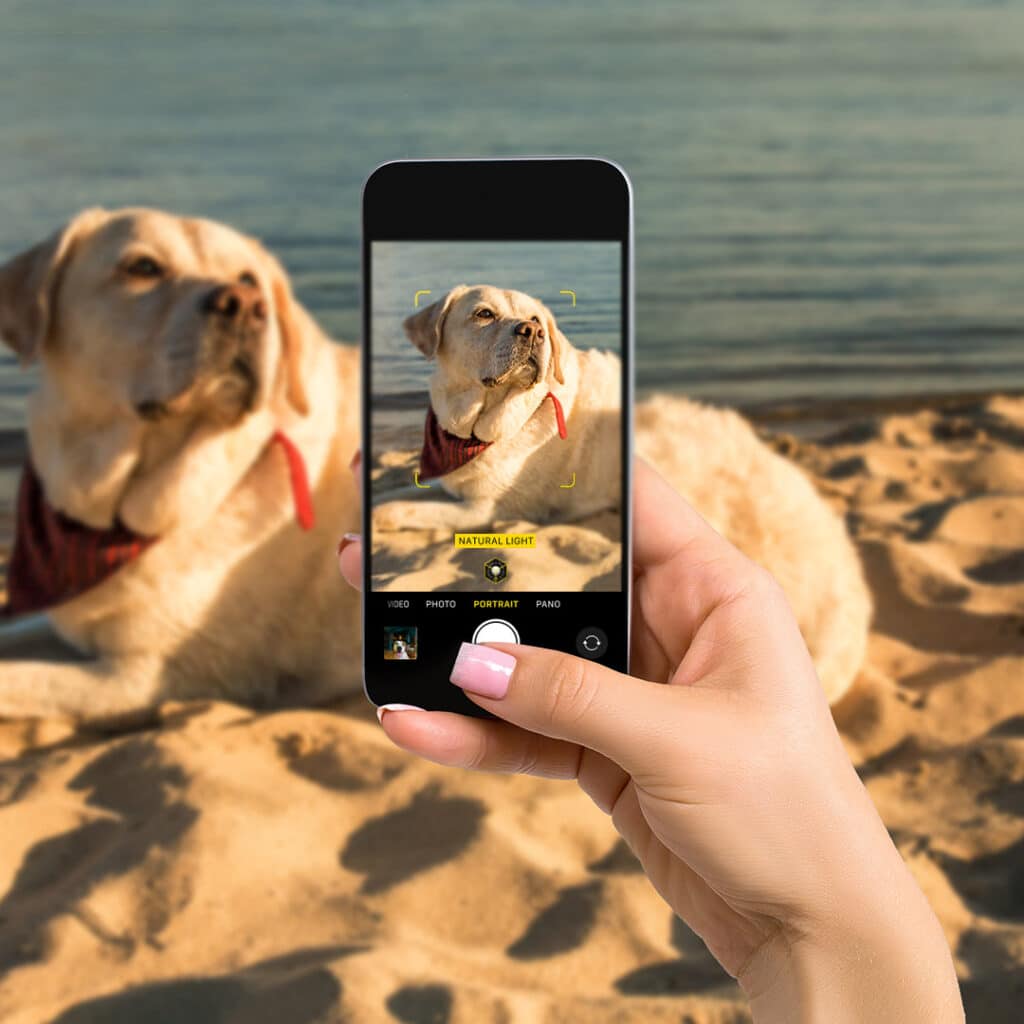
On iPhone X and later, and iPhone 8 Plus, you can use the Portrait Lighting feature to apply studio-quality lighting effects to your Portrait Mode images. Choose from Studio Light to brighten facial features, Contour Light for more dramatic directional lighting, Stage Light to isolate your subject in the spotlight, Stage Mono for stage light in a classic black and white, or High-Key Light Mono for a greyscale subject on a white background.
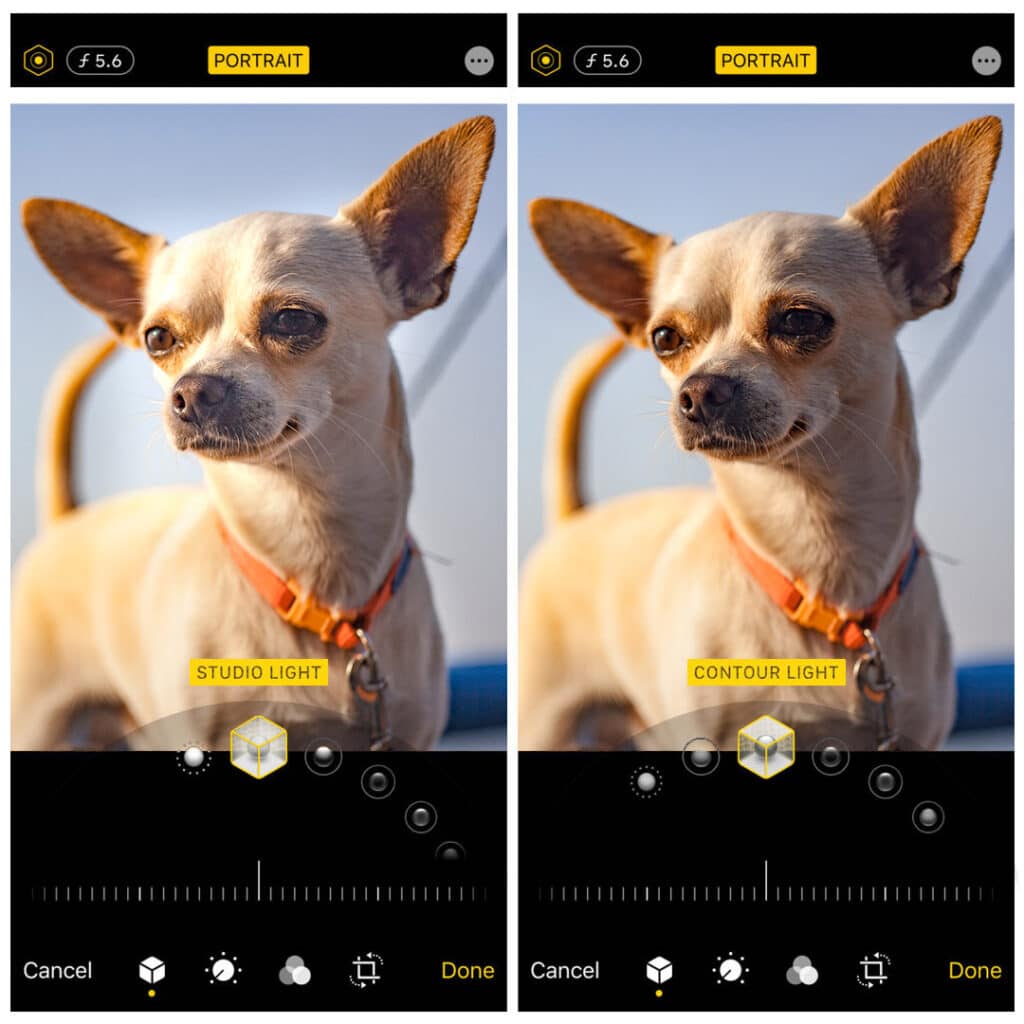
So, now you have much better pet photos… What next?
Create adorable Christmas cards with your new pet photos:
Check out our favourite animal card designs. Just add photos!
- 18x13cm Flat Card set – Design by Tumbalina 1
- 18x13cm Flat Card set – Design by Tumbalina 2
- 18x13cm Flat Card set – Christmas Photo Cards 1
- 18x13cm Flat Card set – Christmas Photo Cards 2
- 18x13cm Flat Card set – Christmas Photo Cards 3

Create a pet photo book. We have some lovely animal photo book designs.

You can tag us with @snapfishie in your photos on Instagram or Facebook or use the hashtag #snapfishie. Don’t forget to follow us on YouTube and Pinterest, too. Check out the Snapfish site for even more new products that you and your pet will love.
